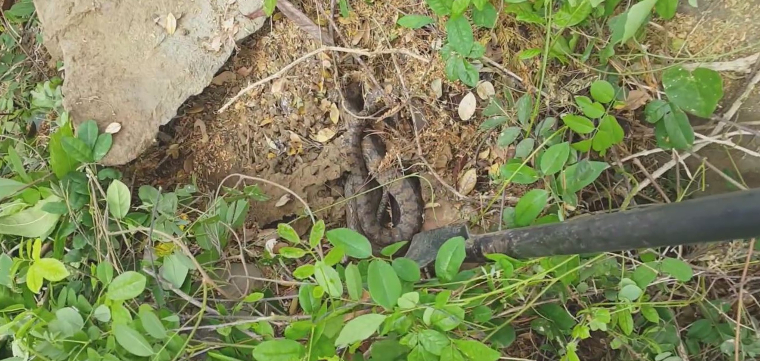-
info@aaanimalcontrol.com
Call us for help in your town
Humane Wildlife Education
Do snakes live in holes?
Need snake removal in your hometown? We service over 500 USA locations! Click here to hire us in your town and check prices- updated for year 2020.
Some snake species do live in holes, although they don't dig those holes for themselves. Snakes have the kind of body and strength to allow themselves to burrow under a level, such as leaf litter on the floor, but do not have the right kind of body or strength to physically dig a hole in the ground, especially hard-packed earth. They tend to steal the underground lairs and dens of other animals, the species of which will depend on the habitat and size or species of snake. Larger snakes will need a larger area, but still look for very tight and compact little underground holes. The reptile likes to feel secure so will, therefore, choose a hole that it really does need to squeeze into. It makes the animal feel secure. If there is too much space all around, other creatures, including predators, can sneak in and catch the snake unawares.

These underground dens are where the snakes want and need to feel safe, warm, sheltered, and protected, especially from predators. Snakes will tend to return to their dens after a big meal, when the body needs time to digest. During this time, the snake will be sluggish and slow, and this puts the animal in a very vulnerable place, easily overcome by predators that wouldn't normally stand a chance. Other times that the snake will head to an underground den will be when the temperature gets too cold, and the animal needs to seek out warmth. Cold-blood reptiles, snakes are unable to regulate their own body temperature. If it cold outside, the snake will feel cold. When the animal heads into the den to sleep, it will slow down its own metabolism so that it doesn't waste too much energy.
Of course, egg-laying time is when most snakes need the comfort and safety of a tight-squeeze hole. Other live-laying snake species will also use underground or burrowed-in spaces to give birth. The same protection offered to the mother is offered to her young, and many of the species will abandon their youngsters very soon after laying or giving birth. By making sure she has placed them in a spot that won't be easily affected by predators, she's giving them the strongest chance of survival.
For more information, you may want to click on one of these guides that I wrote:
How much does snake removal cost? - get the lowdown on prices.
How to get rid of snakes - my main snake removal info guide.
Example snake trapping photographs - get do-it-yourself ideas.
Snake job blog - learn from great examples of snake jobs I've done.


















